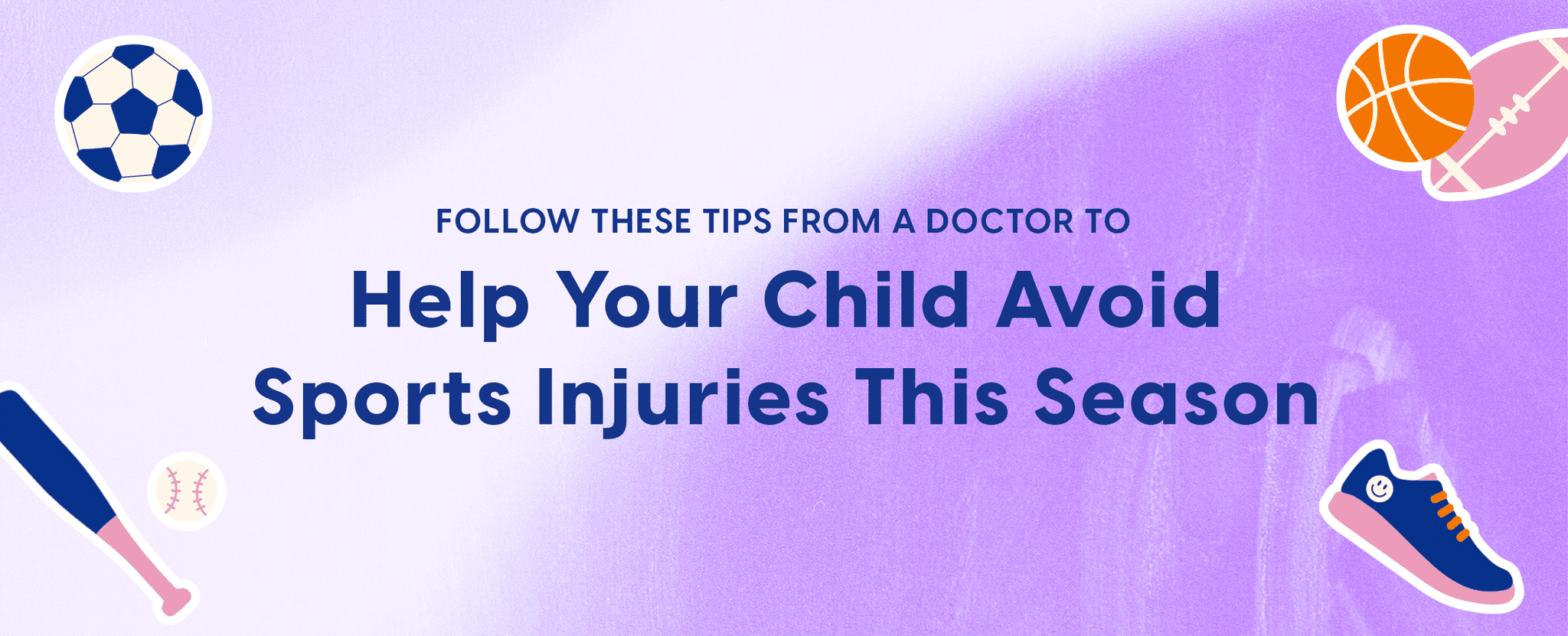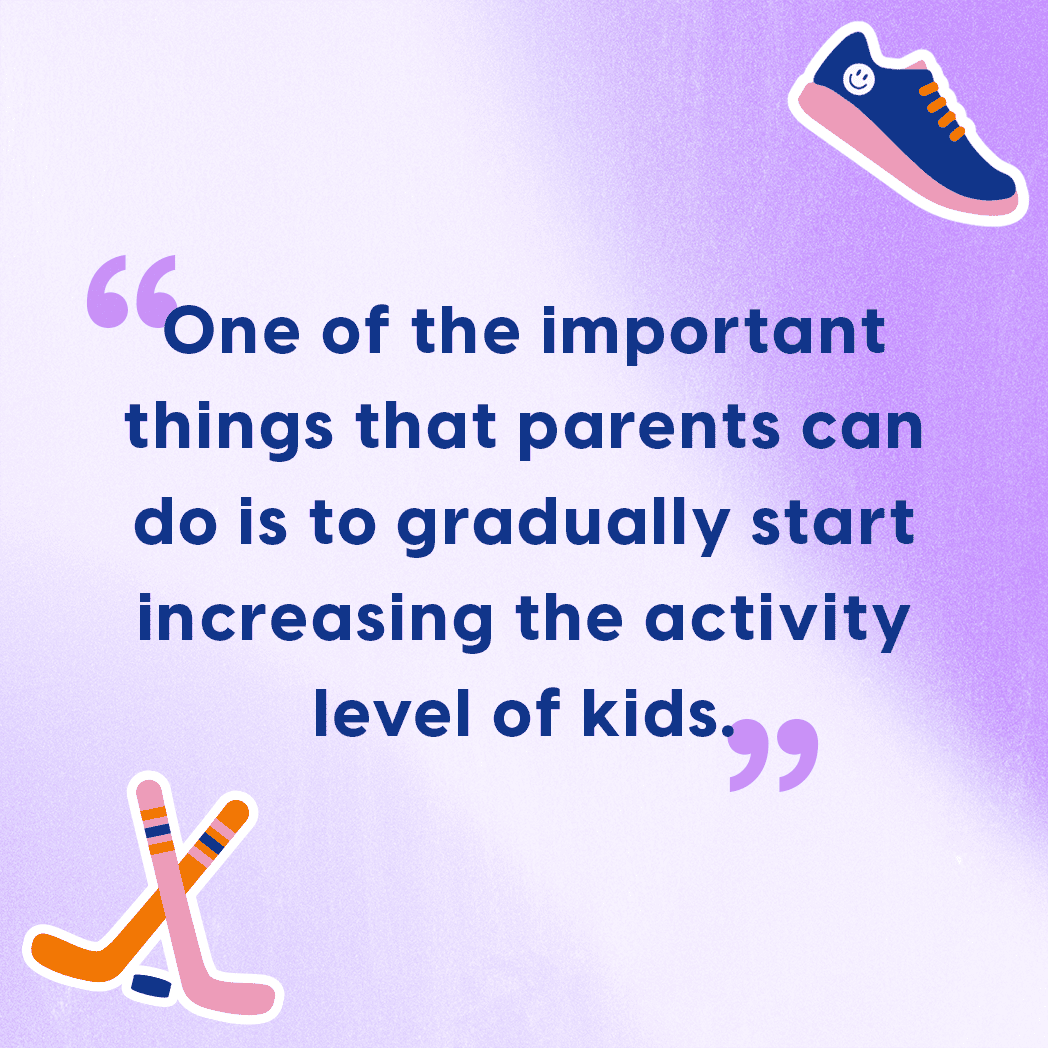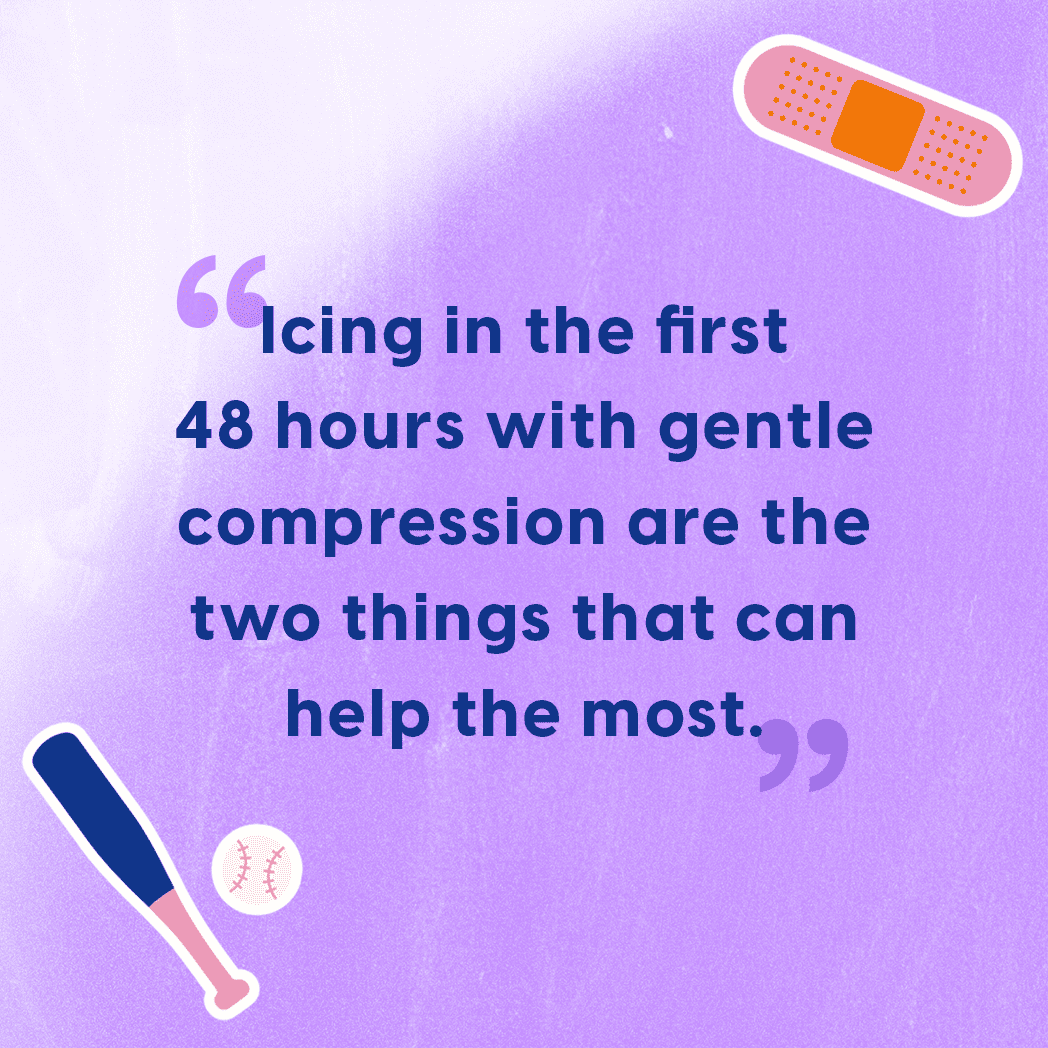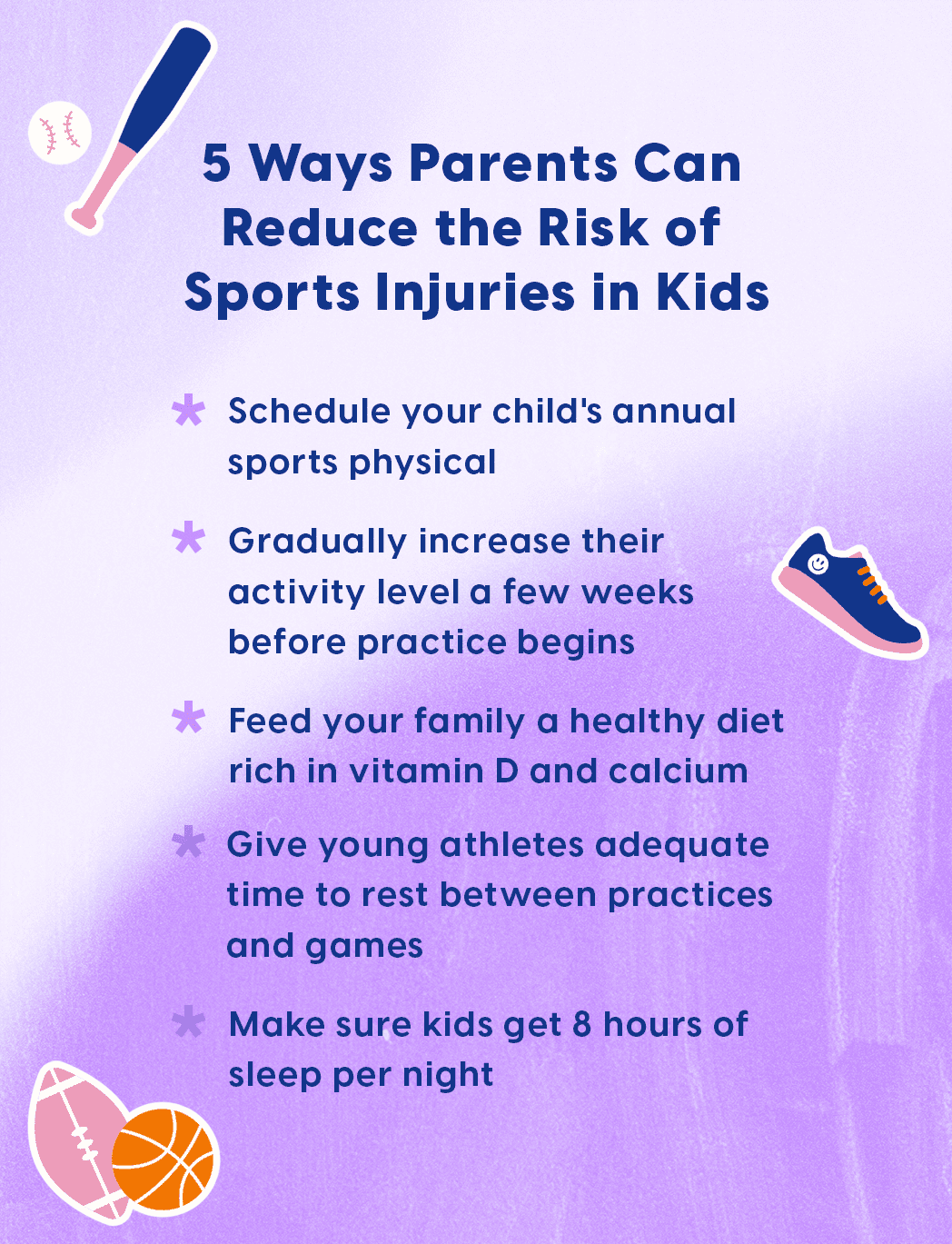
How Parents Can Reduce the Risk of Sports Injuries in Kids
Follow These Tips From a Doctor to Help Your Child Avoid Sports Injuries This Season

For many families, going back to school also means going back to sports. As the family calendar starts filling up with afternoon practices, evening scrimmages, and weekend tournaments, parents will also need to start thinking about keeping their athletes healthy through a packed sports season.
Christine Boyd, MD, the medical director of the Sports Medicine Program at Stanford Medicine Children's Health, says parents can use a few key strategies to not only help kids succeed in sports but also reduce the risk of sports injuries. Keep reading to learn more about helping your kids transition back to an athletic routine, the importance of a sports physical, and common sports injuries to watch out for.

A common pitfall Dr. Boyd sees in her practice is young athletes doing too much, too fast, too soon. Diving back into sports after a summer off without easing into an increased level of physical activity can lead to injuries.
"One of the important things that parents can do is to gradually start increasing the activity level of kids," Dr. Boyd explains. She recommends ramping up the physical activity a few weeks before practice starts. That might look like going for longer family bike rides or more challenging hikes, playing catch in the backyard, or kicking around a soccer ball in the park. Going straight from a more sedentary summer to running several miles on the first day of practice is a setup for injury, Dr. Boyd says.
She also recommends paying attention to the number of sports your child plays, as overdoing their physical activity can also increase the risk of injury. Multiple leagues with daily practices and games on top of each other might be too much. "Especially during times of rapid growth, kids have an increased risk of injury," Dr. Boyd explains. "If you have a child who's going through their growth spurt, just be extra cautious not to overload them with the volume of sports practices and games, because their injury rate is a lot higher." Getting plenty of sleep and eating a diet rich in vitamin D and calcium is particularly important during growth spurts.
Most importantly, Dr. Boyd says parents want to ensure that playing sports is still enjoyable for kids, especially younger children. "I like them to play a lot of sports and make sure that their environment they're in is a positive one, as opposed to a super-intense and competitive sport for a 5-year-old," she says. "I think they need to move their bodies in a lot of different ways, because they're still developing their basic movement skills, and you don't want to isolate just one set of movement patterns in one sport."

Schedule Your Child's Sports Physical
Dr. Boyd also recommends scheduling a sports physical, or preparticipation exam, before children start the sports season. In a sports physical, your child's doctor will talk through their medical history and identify any concerns about your child playing their particular sport, including risk factors that could potentially lead to injury. "Those typically are done a month or two before a child starts sports, primarily so that if there is a need for an intervention, we have time to do it," Dr. Boyd says.
It's not just beneficial for your child, either: many schools and sports leagues also require athletes to complete a sports physical before they can play. Sports physicals are typically good for one year — or sometimes one to two years for high school athletes. For younger children, their sports physical is often incorporated into their annual wellness exam. Dr. Boyd recommends calling your child's doctor to schedule this appointment in advance of the sports season to make sure they can answer any questions you might have.
Once your child starts practice, it's important to keep an eye out for any new injuries. Dr. Boyd says that most younger children typically get minor injuries like bumps, bruises, and scrapes — the more serious injuries tend to come in older athletes. "As we head into middle school and high school, there tends to be more joint sprains, muscle strains, and some overuse injuries from their volume," she says.
Dr. Boyd also tends to see different injuries depending on the sport. "For baseball players, swimmers, or overhead athletes, we see a lot more shoulder and elbow issues," she says. "For other sports such as soccer, basketball, or football, we'll see more ankle and knee injuries just because of the stress of the sport." Knowing the type of injuries that typically occur with your child's sport can help you watch for anything out of the ordinary.
Of course, many parents are also concerned about the risk of concussions, especially in contact sports like football, basketball, or soccer. "Concussions related to sports are obviously a hot topic and an important topic for us all to be mindful of," Dr. Boyd says. "Over the last five years, there's been a large increase in public awareness about the injury and how to manage it and how to recognize it."
The symptoms of concussions often have a delayed onset in young athletes, Dr. Boyd says: it's not uncommon for a child with a concussion not to notice anything unusual until several hours later. Parents will want to keep an eye out for concussion symptoms like headaches, dizziness, fatigue, and brain fog, even if they didn't notice a collision in the moment. "Even the next day, if they wake up and they have a headache, just think back to the game: was there anything in the game that was a big tackle, a big contact that might have led to a concussion?" Dr. Boyd says.

Know When to Seek Medical Care
If you notice that your child came home from practice with an injury, understanding when you need to take them to see a doctor is key. Dr. Boyd recommends paying special attention to joints that don't have a full range of motion, large amounts of swelling, and pain that's getting progressively worse. "My rule of thumb is if something is very deformed or is significantly painful to the point that ice and ibuprofen at home aren't cutting it, then it probably needs to go into the emergency room or urgent care on the weekend," she says. "Other than that, it can wait until next week and can be seen by your primary care doctor."
More minor injuries — think sore bruises and slight sprains — can be treated at home with rest, ice, compression, and elevation, Dr. Boyd says. "Icing in the first 48 hours with gentle compression are the two things that can help the most," she explains. Rest is also crucial: "If somebody has a mild injury and they go back to sports too soon after and they don't let it heal all the way, that's another high-risk time for injury." Typically, Dr. Boyd recommends her patients wait until the injured body part regains full range of motion, feels pain free with daily activity, and has regained at least 80 percent of its strength, but every child and every injury are different. Talk to your child's doctor about when it's safe for them to go back to playing sports after an injury.
Parents might also wonder who they should take their child to see for a sports injury: their usual pediatrician or a specialist? "Most sports injuries initially can be seen by the pediatrician, and then if a pediatrician feels like this needs to be seen by a specialist, I do think a pediatric orthopedic and sports-medicine specialist offer a lot of the advantages," Dr. Boyd explains. Bottom line: maintaining an open dialogue with your pediatrician is key to keeping your young athlete healthy.

Design: Brittany Le